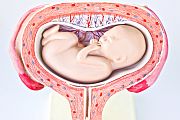From 2005 to 2014, no indication of temporal trends or variation in AFE risk factors
MONDAY, Feb. 23, 2015 (HealthDay News) — The incidence of and risk factors for amniotic fluid embolism (AFE) have not changed over time, according to a study published online Feb. 12 in BJOG: An International Journal of Obstetrics & Gynaecology.
Kate E. Fitzpatrick, from the University of Oxford in the United Kingdom, and colleagues describe the incidence, risk factors, management, and outcomes of AFE from February 2005 to January 2014. Data were collected from the U.K. Obstetric Surveillance System for 120 women diagnosed with AFE and 3,839 control women.
The researchers found the total and fatal incidence of AFE to be estimated at 1.7 and 0.3 per 100,000 women, respectively. There was no indication of a significant temporal trend in incidence over the study period, and no indication of change in AFE risk factors over time. Overall, fatality was 19 percent, and 7 percent of the surviving women had permanent neurological injury. These women were more likely to present with cardiac arrest, be from ethnic-minority groups, and have had a hysterectomy, as well as a shorter interval between the AFE event and hysterectomy; they were less likely to have received cryoprecipitate.
“Further investigation is needed to establish whether earlier treatments can reverse the cascade of deterioration leading to severe outcomes,” the authors write.
Copyright © 2015 HealthDay. All rights reserved.








